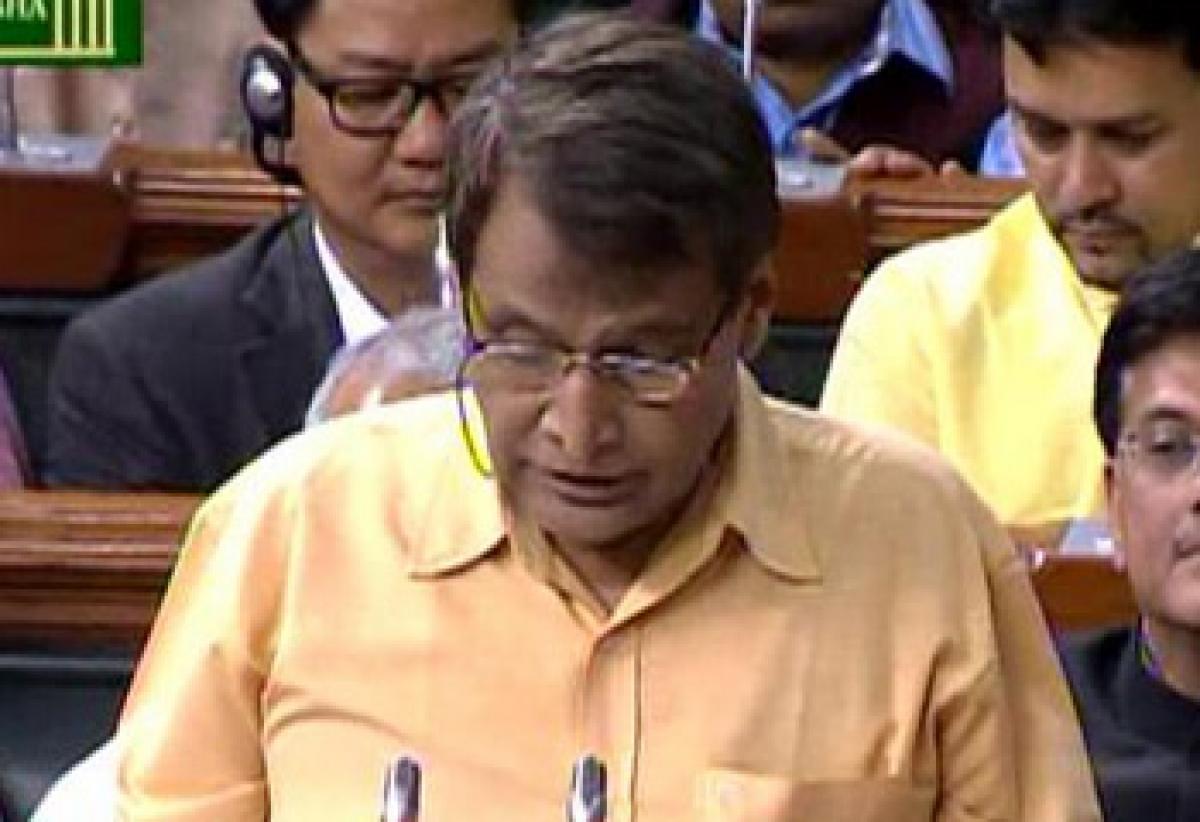Live
- Hari Chandana’s Green Initiatives: Transforming Hyderabad for a better Future
- Gangavati railway station to be renamed Anjanadri: MB Patil
- Bhool Bhulaiyaa 3 Continues to Dominate the Box Office, Grossing Rs 247 Crore
- Nature’s Basket opens B’lore’s largest artisan pantry store
- Top Strategies for Achieving Work-Life Balance and Well-Being
- PM Modi appreciates Early Bird’s efforts
- Wait for big meal at Indira Canteens ends in dismay
- Fishermen in distress due to lax sanitary facilities in Malpe Fisheries Harbour
- BJP, JD(S) leaders helped win Channapatna bypoll
- INS Kuthar makes maiden visit to Gopalpur Port
Just In

India will have yet another Railway Budget today. Economy is opening up. India is fast getting integrated into global economy. More so, rapid pace of urbanisation is resulting in emergence of towns and cities bustling with economic activity. Thus, mobility and connectivity are determining prosperity of individuals and societies, and seamless connectivity is increasingly becoming vital.
India will have yet another Railway Budget today. Economy is opening up. India is fast getting integrated into global economy. More so, rapid pace of urbanisation is resulting in emergence of towns and cities bustling with economic activity. Thus, mobility and connectivity are determining prosperity of individuals and societies, and seamless connectivity is increasingly becoming vital.
In a geographically dispersed country like India, Railways can provide cheaper, more effective and faster mass transport facility. Many villages, towns and even cities in far and remote areas of the country still lack basic rail connectivity. Dozens of rail projects have been languishing for even decades. The Railway Budget, instead of making grandiose announcements and lofty ideas, should focus more on building basic rail infrastructure which is still used by common man to commute for work and livelihood.
The Census 2011 data reveals that at the all-India level, rail remains the sixth most important mode of transport for distances up to 10 km, the fourth most important between 11 km and 30 km and beyond 30 km, it becomes the second most important mode of transport for work. Train usage increases beyond distance of 11 km, sharply in urban areas and gradually in rural areas.
Therefore, Railway planning should focus on integrating people with their places of work. This integration should not only be seamless but affordable, too. The civilisational importance of Railways reveals this point beyond doubt.
With the expansion of rail network, localised train services that have minimum distance between two consecutive stops are declining.
This elitist shift in Rail infrastructure is resulting in people in rural and semi-urban areas being condemned to depend more on accident-prone motorised forms of transport. This is not to argue that India does not need modern, sophisticated rail infrastructure like High Speed Rail and Bullet Trains.
But, India with significant inequalities in development has to balance between various forms of transport. But, unfortunately with media tuned to Parliament, waiting to capture his budget speech, Railway Minister cannot focus on mundane ideas even if they are essential for India’s balanced growth.
Metro Rail is offered as a panacea for India’s transport woes. It’s true that Metro can add to the efforts to meet the needs of burgeoning city populace. But, the statistics reveal that it cannot be a panacea. In an article, Railways for Daily Commuters (Economic and Political Weekly, February 13, 2016), Sumit Chaturvedi quotes relevant statistics to substantiate this argument.
Train usage in the NCR remains only the sixth highest for distances up to 10 km and fourth highest between 11 km and 50 km. The most taken mode of transport in the national capital is the bus, the other major mode of public transport.
India, therefore, needs a holistic transport budget rather than the customary Railway Budget. Such a holistic transport budget should mainly focus on diverse forms of public transport options. Such a policy is imperative in a country like India with humongous social and economic inequalities, wide disparities in development and extreme diversity in employment patterns.

© 2024 Hyderabad Media House Limited/The Hans India. All rights reserved. Powered by hocalwire.com







